[2] 赖文玉,刘畅,吴燕云,等.人骨髓间充质干细胞移植对缺氧缺血性脑病新生大鼠学习记忆功能的影响[J].中华生物医学工程杂志,2008,14(1):27-30.
[3] Kim MK, Cho KJ, Park SI, et al. Initial stage affects survival even after complete pathologic remission is achieved in locally advanced esophageal cancer: analysis of 70 patients with pathologic major response after preoperative chemoradiotherapy. Int J Radiat Oncol Biol Phys. 2009;75(1):115-121.
[4] Wang F, Zhang YC, Zhou H, et al. Evaluation of in vitro and in vivo osteogenic differentiation of nano-hydroxyapatite/chitosan/poly(lactide-co-glycolide) scaffolds with human umbilical cord mesenchymal stem cells. J Biomed Mater Res A. 2014;102(3): 760-768.
[5] Cho H, Choi YK, Lee DH, et al. Effects of magnetic nanoparticle-incorporated human bone marrow-derived mesenchymal stem cells exposed to pulsed electromagnetic fields on injured rat spinal cord. Biotechnol Appl Biochem. 2013;60(6):596-602.
[6] Ghaffari M, Moztarzadeh F, Sepahvandi A,et al.How bone marrow-derived human mesenchymal stem cells respond to poorly crystalline apatite coated orthopedic and dental titanium implants. Ceramics International. 2013;39(7):7793-7802.
[7] Zhou L,Kong JT, Zhuang YP, et al. Ex vivo expansion of bone marrow mesenchymal stem cells using microcarrier beads in a stirred bioreactor. Biotechnology & Bioprocess Engineering. 2013;18(1):173-184.
[8] 朱美玲李艳,彭爱军,等.人胚胎骨髓间质干细胞移植治疗新生大鼠缺氧缺血性脑病的实验[J].中国临床康复,2005, 9(46):6-8.
[9] 李禄全,余加林.鼠骨髓间充质干细胞在缺氧缺血性脑病新生鼠脑内的分布及分化[J].第三军医大学学报,2005, 27(4):327-330.
[10] Kroustalli AA, Kourkouli SN, Deligianni DD. Cellular Function and Adhesion Mechanisms of Human Bone Marrow Mesenchymal Stem Cells on Multi-walled Carbon Nanotubes Annals of Biomedical Engineering. 2013; 41(12):2655-2665.
[11] Cho H, Seo YK, Yoon HH, et al. Neural stimulation on human bone marrow-derived mesenchymal stem cells by extremely low frequency electromagnetic fields. Biotechnol Prog. 2012;28(5):1329-1335.
[12] Zhong Y, Xu J, Deng M, et al. Generation of a human bone marrow-derived mesenchymal stem cell line expressing and secreting high levels of bioactive α-melanocyte-stimulating hormone. J Biochem. 2013; 153(4):371-379.
[13] Wang X, He D, Chen L, et al. Cell-surface ultrastructural changes during the in vitro neuron-like differentiation of rat bone marrow-derived mesenchymal stem cells. Scanning. 2011;33(2): 69-77.
[14] Ling SK, Wang R, Dai ZQ, et al. Pretreatment of rat bone marrow mesenchymal stem cells with a combination of hypergravity and 5-azacytidine enhances therapeutic efficacy for myocardial infarction. Biotechnol Prog. 2011;27(2):473-482.
[15] Tzameret A, Sher I, Belkin M, et al. Transplantation of human bone marrow mesenchymal stem cells as a thin subretinal layer ameliorates retinal degeneration in a rat model of retinal dystrophy. Exp Eye Res. 2014;118: 135-144.
[16] 谢帆.骨髓间充质干细胞治疗缺血性脑卒中的研究与应用[J].西南军医,2014,16(2):203-206.
[17] 王戈鹰,窦玲,吴爽,等.构建稳定表达胞外信号调节激酶的大鼠骨髓间充质干细胞及其对大鼠脑卒中的神经保护作用[J].解剖学杂志,2013,36(3):345-349.
[18] Xue F, Wu EJ, Zhang PX, et al.Biodegradable chitin conduit tubulation combined with bone marrow mesenchymal stem cell transplantation for treatment of spinal cord injury by reducing glial scar and cavity formation. Neural Regen Res. 2015;10(1): 104-111.
[19] Enomoto M.The future of bone marrow stromal cell transplantation for the treatment of spinal cord injury. Neural Regen Res. 2015;10(3):383-384.
[20] 韩聪.骨髓间充质干细胞治疗缺血性脑卒中的研究进展[J].中国临床神经外科杂志,2011,16(11):697-700.
[21] Kim SH, Oh SA, Lee WK. Poly(lactic acid) porous scaffold with calcium phosphate mineralized surface and bone marrow mesenchymal stem cell growth and differentiation. Materials Science & Engineering C. 2011; 31(3):612-619.
[22] Chong PP, Selvaratnam L, Abbas AA, et al. Human peripheral blood derived mesenchymal stem cells demonstrate similar characteristics and chondrogenic differentiation potential to bone marrow derived mesenchymal stem cells. J Orthop Res. 2012;30(4): 634-642.
[23] Krishnamurithy G, Murali MR, Hamdi M, et al. Characterization of bovine-derived porous hydroxyapatite scaffold and its potential to support osteogenic differentiation of human bone marrow derived mesenchymal stem cells. Ceramics International. 2014; 40(1):771-777.
[24] 韩聪.骨髓间充质干细胞治疗缺血性脑卒中的机制研究[J].立体定向和功能性神经外科杂志,2011,24(2): 125-128.
[25] 裴远,靳令经,聂志余.不同类型干细胞移植治疗缺血性脑卒中的研究现状[J].上海医学,2012,35(1):84-87.
[26] Bhang SH, Gwak SJ, Lee TJ, et al. Cyclic mechanical strain promotes transforming-growth-factor-beta1- mediated cardiomyogenic marker expression in bone-marrow-derived mesenchymal stem cells in vitro. Biotechnol Appl Biochem. 2010;55(4):191-197.
[27] 张世魁,马娅琼,杨蓉佳,等.128层螺旋CT灌注成像在诊断急性脑梗死及评价患者临床预后的应用价值[J].中国动脉硬化杂志,2015,23(6):603-606.
[28] 王长河.CT脑灌注成像与CT血管成像对颈动脉狭窄性短暂性脑缺血发作的诊断价值[J].中国实用神经疾病杂志, 2015,18(7):69-71.
[29] 刘俊中,王天玉,郭广涛,等.急性缺血性脑卒中应用CT脑灌注与血管造影诊断价值研究[J].中国CT和MRI杂志, 2015,13(7):4-6.
[30] 张玉伟,田辉强,李青伟,等.低辐射剂量 CT脑灌注成像与 CT平扫在急性脑梗死诊断中的应用效果比较[J].临床合理用药杂志,2015,8(19):116-117.
[31] 张玉伟,田辉强,李青伟,等.低辐射剂量CT脑灌注成像在急性脑梗死治疗中的应用[J].临床合理用药杂志,2015, 8(13):78-79.
[32] Marycz K, ?mieszek A, Grzesiak J, et al. Application of bone marrow and adipose-derived mesenchymal stem cells for testing the biocompatibility of metal-based biomaterials functionalized with ascorbic acid. Biomed Mater. 2013;8(6):065004.
[33] 王万宏,王亚林,卢庆韬.自体骨髓间充质干细胞移植对脑出血患者神经功能及血浆Hcy的影响[J].中国实验诊断学,2015,19(8):1324-1325.
[34] 何展文,刘木金,孟哲,等.异体骨髓间充质干细胞对 EAE 大鼠神经再生保护作用的研究[J].中国实用神经疾病杂志,2015,18(14):1-4.
[35] Ye X, Yin X, Yang D, et al. Ectopic bone regeneration by human bone marrow mononucleated cells, undifferentiated and osteogenically differentiated bone marrow mesenchymal stem cells in beta-tricalcium phosphate scaffolds. Tissue Eng Part C Methods. 2012;18(7):545-556.
[36] Gershovich PM, Gershovich JG, Zhambalova AP,et al. Cytoskeletal proteins and stem cell markers gene expression in human bone marrow mesenchymal stromal cells after different periods of simulated microgravity. Acta Astronautica.2012;70(1):36-42.
[37] 刘超,吴海琴,严璞,等.骨髓间充质干细胞移植治疗缺血性脑卒中疗效和安全性的Meta分析[J].中国循证医学杂志, 2015,15(6):659-663.
[38] Barry F, Boynton RE, Liu B, et al. Chondrogenic differentiation of mesenchymal stem cells from bone marrow: differentiation-dependent gene expression of matrix components. Exp Cell Res. 2001;268(2): 189-200.
[39] 余倩.骨髓间充质干细胞移植治疗缺血性脑卒中的机制[J].检验医学与临床,2014,11(3):407-408.
[40] 王苏平,孙鑫,李深.骨髓间充质干细胞治疗缺血性脑卒中研究进展[J].中风与神经疾病杂志,2014,31(3):280-282.
.jpg)

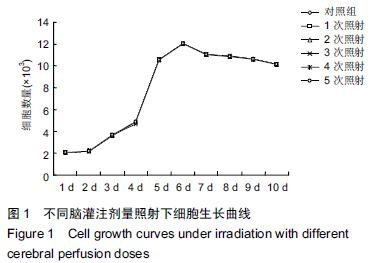
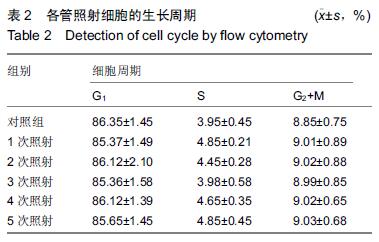
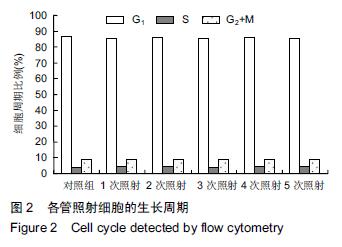
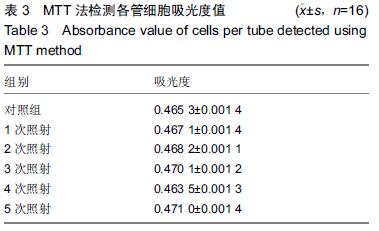
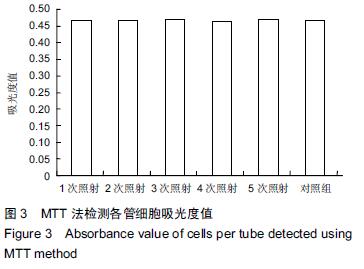
.jpg)